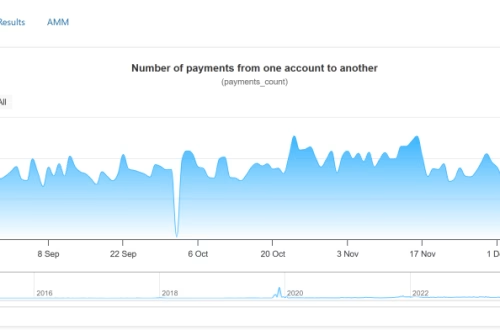how to use futures trading in crypto
Summary:
Futures trading in crypto allows traders to speculate on the future price of digital assets like Bitcoin or Ethereum without owning them outright. This guide explores how beginners can engage in crypto futures, leveraging margin, long/short positions, and risk management strategies. Crypto futures offer amplified profit potential but come with high risk, making them suitable for knowledgeable traders who understand market volatility. By learning key concepts like leverage, funding rates, and hedging, newcomers can navigate this advanced trading method more confidently.
What This Means for You:
- Potential for higher returns: Crypto futures allow you to multiply gains using leverage, but losses are equally magnified. Start with low leverage (2x-5x) to minimize risk while learning the market dynamics.
- Hedging against market downturns: Futures enable short-selling, letting you profit from price drops. This is useful if you believe a cryptocurrency will decline in value, but proper stop-loss orders are essential to prevent heavy losses.
- Access to advanced trading strategies: You can implement spreads, arbitrage, or hedging techniques to balance risk. However, always backtest strategies in a demo account before using real funds.
- Future outlook or warning: While crypto futures markets are growing, extreme volatility and regulatory uncertainties remain. Many inexperienced traders suffer liquidation due to over-leveraging—never invest more than you can afford to lose.
Explained: how to use futures trading in crypto
What Are Crypto Futures?
Crypto futures are contracts that obligate traders to buy or sell an asset at a predetermined price and date. Unlike spot trading, futures allow speculation on price movements without direct ownership, enabling both bullish (long) and bearish (short) positions.
Step-by-Step Guide to Trading Crypto Futures
1. Choose a Reliable Exchange
Select a platform that offers futures trading, such as Binance, Bybit, or Deribit. Ensure it has strong liquidity, security measures, and user-friendly tools for risk management.
2. Understand Leverage and Margin
Leverage allows you to control larger positions with less capital (e.g., 10x leverage lets you trade $10,000 with $1,000). However, higher leverage increases liquidation risk—where positions are forcibly closed if losses exceed margin.
3. Decide on Long or Short Positions
Use technical and fundamental analysis to predict market trends before entering a trade.
4. Set Risk Management Tools
Always use stop-loss and take-profit orders to mitigate losses. For example, a 5% stop-loss automatically closes your position if the price moves against you by a set percentage.
5. Monitor Funding Rates
Perpetual futures contracts (no expiry) have funding fees exchanged between long and short traders. Positive funding means longs pay shorts (indicating bullish sentiment).
Advantages of Futures Trading
- No need to hold the asset: Speculate on price without owning Bitcoin or other cryptocurrencies.
- Liquidity and 24/7 markets: Trade anytime, unlike traditional futures markets.
- Hedging capabilities: Protect spot holdings by taking opposite futures positions.
Risks and Considerations
- Liquidation risk: High leverage can wipe out your position quickly in volatile markets.
- Complexity: Requires understanding of derivatives, margin, and market indicators.
- Regulatory risks: Some regions restrict leverage or ban crypto futures entirely.
Best Practices for Beginners
- Start with demo accounts or small positions.
- Never risk more than 1-2% of capital per trade.
- Avoid emotional trading—stick to a predefined strategy.
People Also Ask About:
- How does leverage work in crypto futures? Leverage multiplies your exposure to price movements. For example, 10x leverage means a 10% price move becomes a 100% profit or loss on your margin. Exchanges offer varying levels (2x-125x), but higher leverage increases liquidation risk.
- What’s the difference between futures and spot trading? Spot trading involves buying and holding actual crypto, while futures are contracts betting on future prices. Futures allow short-selling and leverage, whereas spot traders only profit from price increases.
- Can I lose more than I invest in futures? Most crypto exchanges use “auto-deleveraging” to prevent negative balances, but some decentralized platforms may lack this feature. Always use stop-loss orders to limit losses.
- What are perpetual futures? Unlike traditional futures with expiration dates, perpetual futures (e.g., BTC-PERP) never expire. They use funding rates to keep prices aligned with spot markets, adjusting every few hours.
Expert Opinion:
Crypto futures are powerful tools but demand caution. Beginners should avoid high leverage until they master risk management, as volatility in Bitcoin and altcoins can trigger rapid liquidations. Institutional interest is increasing market depth, but retail traders must stay updated on regulations and funding rates. Diversifying strategies and using cold storage for non-trading funds can reduce unnecessary exposure.
Extra Information:
- Binance Futures Trading Guide – A detailed breakdown of leverage, fees, and contract specifications on Binance, the largest crypto futures exchange.
- Binance Academy: Futures Explained – Educational resource covering futures mechanics, hedging, and practical examples.
Related Key Terms:
- best crypto futures trading strategies for beginners
- how to short Bitcoin with futures contracts
- crypto futures leverage explained
- perpetual vs quarterly futures trading
- how to avoid liquidation in crypto futures
- top exchanges for Bitcoin futures trading
- understanding funding rates in crypto futures
#Futures #Trading #Crypto #StepbyStep #Guide #Beginners
Featured image generated by Dall-E 3





